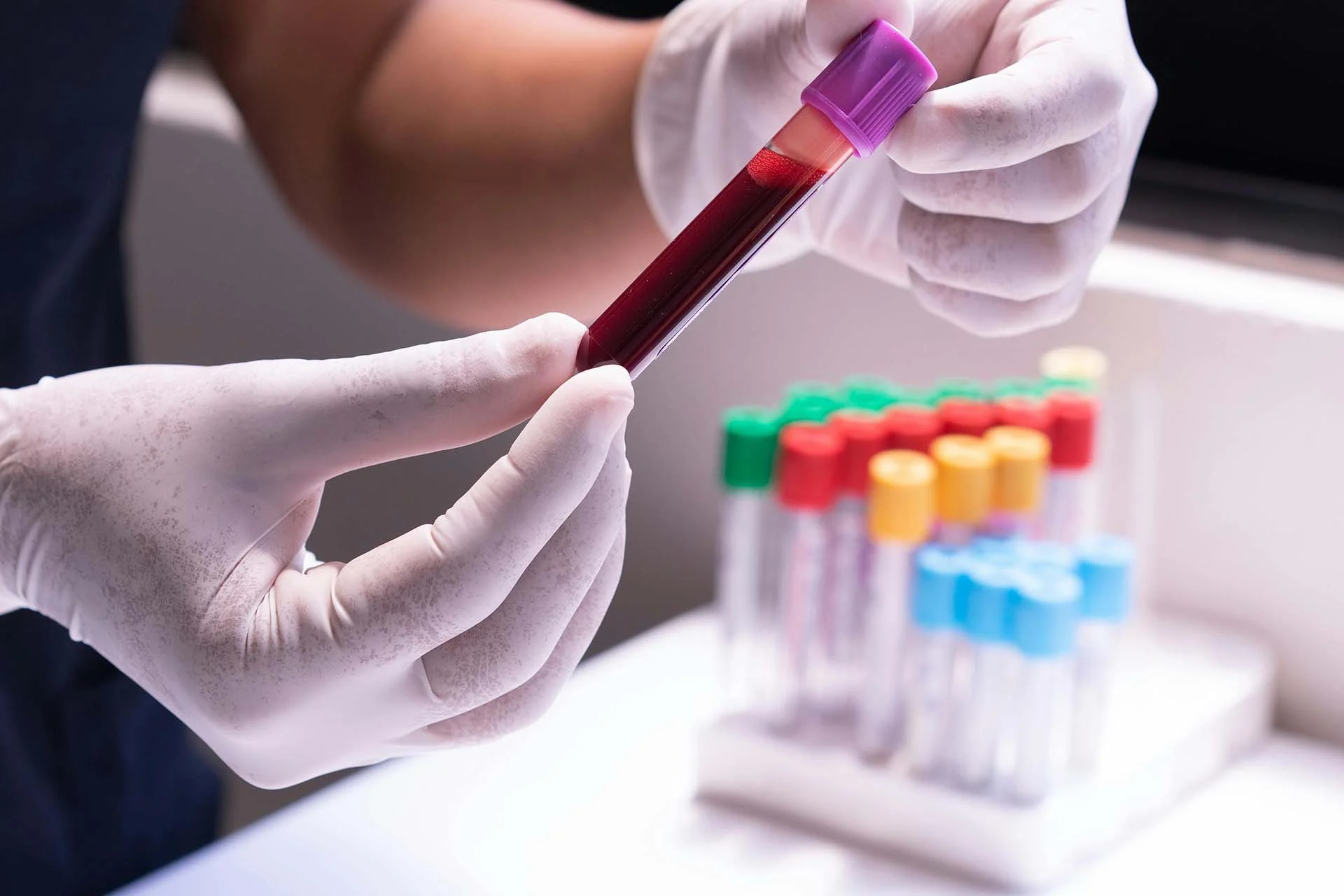Every so often, news breaks that changes what we think is possible. For many women, hearing “ovarian cancer” can feel like the weight of the world. That’s because about four out of five ovarian cancer cases aren’t caught until it’s advanced. One women-founded startup, though, is determined to flip the script—offering a simple blood test that might one day catch ovarian cancer before it can slip under the radar.
The “Silent Killer” Problem
Ask someone diagnosed with ovarian cancer about symptoms, and you’ll often hear frustration. This illness is known to sneak up quietly. Many women first suspect irritable bowel or bloating, only to learn much later they’re dealing with something far more serious. According to estimates, the result is that up to 80% of women face late-stage diagnoses, when treatment options are tougher and survival chances can fall drastically.
“When it’s found at earlier stages, survival rates jump,” says CEO and Co-Founder of AOA Dx, Oriana Papin-Zoghbi. “Our entire mission is to help women avoid finding out too late. Why settle for guesswork when we can deliver a clearer diagnosis in a blood sample?” That simple question laid the groundwork for the Denver-based biotech group on a mission to detect early-stage ovarian cancer.
Growing a Lab and an Idea
Though the pandemic slowed countless industries, AOA Dx used that window to refine its approach. Founded in 2020 by a team of women entrepreneurs—most of them scattered remotely at first—they built their company around a crucial technology: a test that scans for what they call “tumor marker gangliosides” along with other biomarkers. The dream? Spot early “smoke signals” from ovarian cancer before it spreads.
Given the medical complexities, they realized the need for a physical space where experts could push the science forward. Thanks to major funding, AOA Dx established a lab in Denver. According to Papin-Zoghbi, “We found all these brilliant people right here in Colorado, from immunologists to data scientists. Denver was the obvious choice.”
A Rising Collaboration
AOA’s test needed real-world validation. They approached the University of Colorado Anschutz Medical Campus, a major research institution with a significant reservoir of ovarian cancer samples and top-notch staff. The campus, located in Aurora, opened its labs and resources so that AOA’s technology could be tested on living samples from women dealing with various forms of ovarian cancer.
“This is what I’ve dedicated my career to,” says Dr. Kian Behbahkt, a gynecological oncologist and cancer researcher at UC Anschutz. “But AOA had something different—an approach that uses multiple markers and big-data analysis. We believed in the potential. So, we rolled up our sleeves together.”
So far, the synergy has been remarkable. Over 500 serum samples from different categories—healthy individuals, benign conditions, and confirmed ovarian cancer—helped AOA refine the test’s accuracy. The result: a test that can pick up suspicious signals from cancer cells, or “gangliosides,” even when the tumor is barely visible.
A Personal Face to the Data
What does this all mean on a human level? Let’s talk about someone like Kolstoe, a woman mentioned in local coverage. She was initially told her fatigue and abdominal issues were “nothing major,” maybe IBS. Later, the dreaded diagnosis arrived. By then, the options had narrowed.
“I feel sad my lifespan is shorter,” Kolstoe reportedly said, “but if I can help push this test forward, my daughters won’t face the same heartbreak.” She speaks of meaning: “I’m just happy to see progress that might spare the next generation.” AOA’s test signals hope that a future patient like Kolstoe could hear “You have it, but we caught it super early, and your odds just skyrocketed.”
Inside the Blood Test Breakthrough
Let’s get a bit nerdy: Typically, attempts at an ovarian cancer test focus on either a single protein marker or a broad genetic approach. AOA Dx’s approach is more layered. The test hunts for lipids—specifically “tumor marker gangliosides”—plus proteins and additional biomarkers that show up in blood when a tumor is small. The research uses advanced chromatography, mass spectrometry, and an AI-based data analysis platform. In simpler terms: they’re not looking for just one sign of trouble but an entire set of red flags that together speak volumes.
AOA calls the platform GlycoLocate™. Instead of a long, invasive procedure, you give a blood sample. The system is designed to pick out differences that healthy blood doesn’t have. If the test sees these “smoke signals,” doctors know to investigate further.
Core Points
- Non-Invasive: Just a blood draw, no scoping or large-scale surgery needed.
- Faster: People who feel weird, bloated, or have mild pain might learn within days or weeks if an early tumor is lurking.
- Better Prognosis: If a tumor is found at stage I or II, survival chances can double or triple compared to late-stage.
The Journey
AOA’s story is also about women taking charge. It’s no secret that research on women-specific conditions often faces underfunding or slower progress. “We said we weren’t going to stand around and wait for the system to magically fix itself,” explains Co-Founder Anna Jeter. “We wanted to create a lab that thinks first about women’s well-being. Ovarian cancer was top of the list.”
While AOA’s initial focus is on this “silent killer,” the approach might not stop at ovarian. Once proven, the same multi-omics strategy might help with other cancers like breast, lung, or melanoma. This is not guaranteed, of course, but it’s part of the long-term vision.
Challenges & Reality Checks
All biotech breakthroughs face a winding road. AOA’s test must pass rigorous trials, from pilot studies to large-scale, multi-center validations. Even after FDA greenlight, doctors have to be convinced to adopt it, insurance must cover it, and patients must trust it.
For Dr. Behbahkt, the biggest question is how soon this can reach mainstream. “We’re on the verge of something that could shift how we diagnose. But we need patience, big funding, and big-data confidence to show it works in everyday clinics.”
Insurance coverage is another layer. Historically, new detection tools for cancer can be slow to get recognized by payers. If the test is pricey at first, adoption might lag. Yet the cost of advanced ovarian cancer can easily top $100,000 in the first year alone, which might persuade insurers that an earlier, simpler solution is cheaper and more humane.
Then there’s the unstoppable need for more data. The researchers want to see how well this test performs in early or borderline stages, as well as in premenopausal vs. postmenopausal women. “The more diverse the samples, the stronger the argument for acceptance,” Jeter points out.
A Glimpse into the Future
If AOA’s test hits the market, many wonder if it could become as routine as mammograms for breast cancer or PSA tests for prostate cancer. Not every patient might need it regularly; it could be recommended for those with certain risk factors or concerning symptoms. If it does become widespread, it might slash the average 9-month wait to confirm a diagnosis, drastically raising the chance of successful treatment.
“Really, the proof…will be that we see fewer and fewer women dying from this disease,” says Dr. Behbahkt. “That’s the day I can celebrate.”
Why Colorado?
You might wonder: Why not Boston or the Bay Area, known for biotech? AOA’s leadership says they found a vibrant scene in Denver, along with synergy at the University of Colorado Anschutz labs. The city—once overshadowed by Silicon Valley—has blossomed as a life sciences hotspot, with easy access to academic partners, strong philanthropic networks, and decent cost-of-living for staff. That’s good for recruiting scientists who want to live in a place with mountains and sunshine.
The Real People Factor
Papin-Zoghbi admits that behind every data set is a real woman who might avoid tragedy by hearing “you’ve got an early tumor.” Take the case of a mother who’s been brushing off abdominal pain for months. She goes in for a simple blood draw, gets the phone call, “We found early signs of possible cancer. Let’s do a follow-up.” Then, the earlier the detection, the more likely she sees her kids graduate or starts that dream business. That is the day-to-day hope fueling AOA’s entire staff.
A Movement, Not Just a Product
AOA also aims to spark broader interest in women-led biotech startups. They’re part of a wave of founders building labs focusing on issues historically underprioritized. By demonstrating success here, they might open doors for other women’s health solutions, from better maternal health screening to advanced endometriosis detection. Each success story can ripple, changing how researchers and investors view the entire sector.
Get Involved
- Healthcare Providers: Stay updated on trial outcomes. It’s wise to learn how these multi-omic approaches might become tomorrow’s standard.
- Investors/Philanthropists: Keep an eye on the next phase of expansion. Early detection can slash both human and monetary costs.
- General Public: Spread awareness. If you suspect something, don’t shrug it off. Encourage others to ask about clinical trials. The difference could be life or death.
A Shared Vision
At the University of Colorado Anschutz, Dr. Behbahkt sees a not-so-distant day when the “silent killer” is anything but silent. “We used to think of routine screening for ovarian cancer as a fantasy,” he says. “Now, we see the building blocks in front of us.”
For Kolstoe, the notion that her daughters might never experience the worry she’s endured brings a level of peace. “If I have to be in this position, at least my story or my samples might save them from it. It’s a relief to think something good might rise from my situation.”
We’ve all heard the frustration: We want solutions, not just grim news about how difficult cancer can be. AOA’s approach might not be an instant fix. But it’s well on its way, forging a path with open collaboration, advanced science, and a resolute commitment to women’s health.
Final Takeaway
No single test can magically end ovarian cancer, yet. But the synergy of cutting-edge labs and university partners in Colorado is shaping a blood test that may help change survival odds for thousands of women. If it works as planned, one day we’ll look back at how a small, women-founded startup in Denver took on a big challenge—and gave families worldwide a reason to hope. Maybe soon, the phrase “caught it just in time” will be the new normal for ovarian cancer diagnoses. That’s the future these researchers are hustling to create—and it feels so much brighter than before.





My grandma would’ve loved to see this progress. Miss her every day.